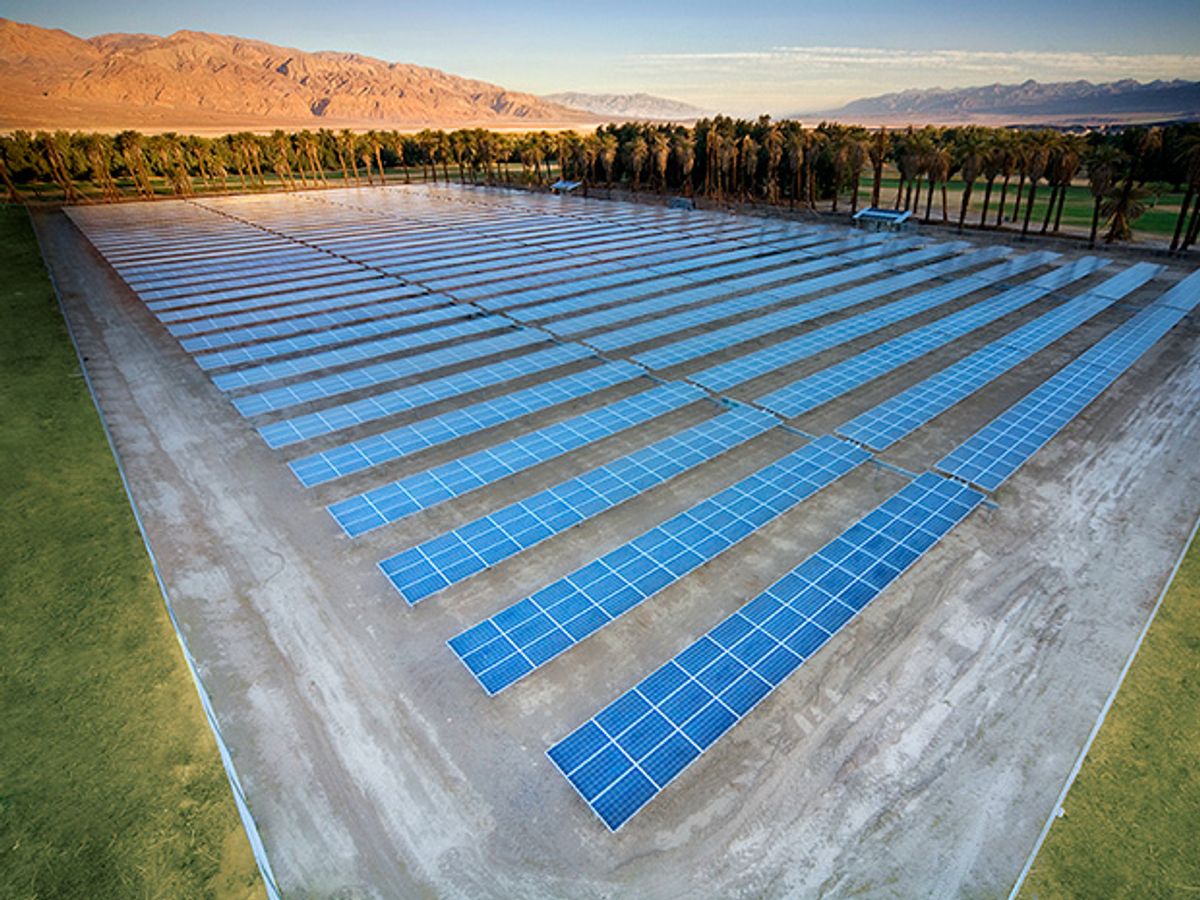The National Renewable Energy Laboratory (NREL) released a report [PDF] last week that aimed to quantify exactly how much room solar power requires. Land use and space issues have long been a point of contention when it comes to renewables, with opponents complaining that the huge spaces required for solar and wind aren't worth the effort. The NREL report suggests the acreage required for industrial-scale solar power plants is within the range of previous estimates, and generally doesn't seem off-the-charts outrageous.
“The numbers aren’t good news or bad news,” said Paul Denholm, one of the report's authors, in a press release. “It’s just that there was not an understanding of actual land use requirements before this work." The report used land use data from 72 percent of all large solar plants installed in the U.S., and found that the total area requirements for a photovoltaic (PV) plant between 1 and 20 megawatt capacity is 8.3 acres per MW. For larger PV plants, the total area needed is 7.9 acres per MW, while concentrating solar power plants (CSP) need 10 acres per MW. When weighted by generation rather than capacity, the larger PV plants (3.4 acres per gigawatt-hour per year) and CSP plants (3.5 acres/GWh/year) do a bit better than smaller PV plants (4.1 acres/GWh/year).
This isn't the first time NREL has looked at solar land use, though it is the first time they used a whole lot of actual power plants to figure out the numbers. In the past, they estimated that to power all of the U.S. with solar power, it would require 0.6 percent of all the area in the country. How do the latest numbers stack up with that? To the back of the envelope!
The new report says that a PV plant capable of powering 1 000 homes needs 32 acres. According to the U.S. Census Bureau, there are around 115 million occupied and fully used homes in the country. If we just scale up linearly (which is not, of course, how this would actually work), that means 3.68 million acres to power all of them. That's equivalent to 5 750 square miles, or around 0.1 percent of all the land the US has to offer. Not bad!
Perhaps more relevant is the question of how these land use requirements measure up to other forms of energy. When it comes to renewables, there's no doubt that solar power is far more area-efficient than wind power; an NREL report [PDF] from several years ago found a total requirement of about 84 acres per MW, a far cry from the 10 or so acres that solar seems to max out at. Geothermal energy might be the best of the bunch, though, in the low single digits.
Outside of renewables, things can get a bit complicated. Nuclear power is often considered very area efficient, though mining for uranium could add a complicated factor to that equation. Similarly, coal power plants themselves don't use a ton of space per megawatt generated, but there is little debate on the devastating land use impacts of coal mining. One study looked at what it would take to produce 10 percent and 100 percent of the whole world's power from various sources, and found nuclear and geothermal energy at the very lowest end of area needs, followed by coal, CSP, and natural gas.
Unfortunately, though, we don't yet have government studies similar to the new NREL study that go into each energy source in as much detail. Denholm stressed that doing such studies that use actual, existing plants for coal, nuclear, and natural gas would allow us to more firmly compare which energy sources get us the most bang per acre.
Photo: spg solar / Wikimedia Commons
Dave Levitan is the science writer for FactCheck.org, where he investigates the false and misleading claims about science that U.S. politicians occasionally make.



